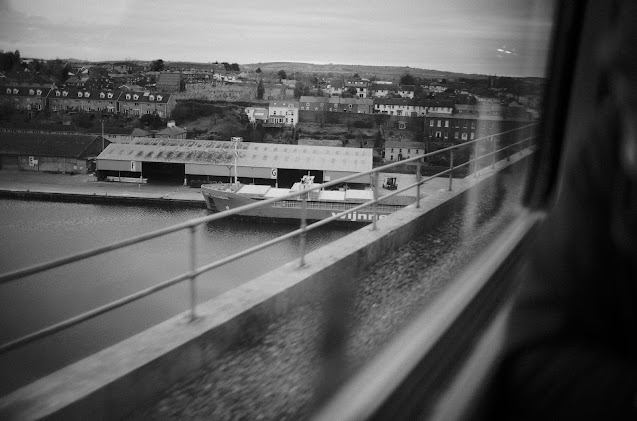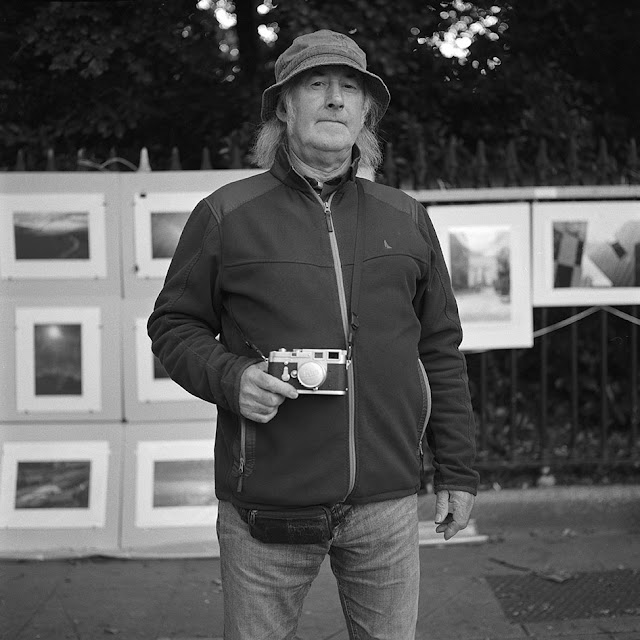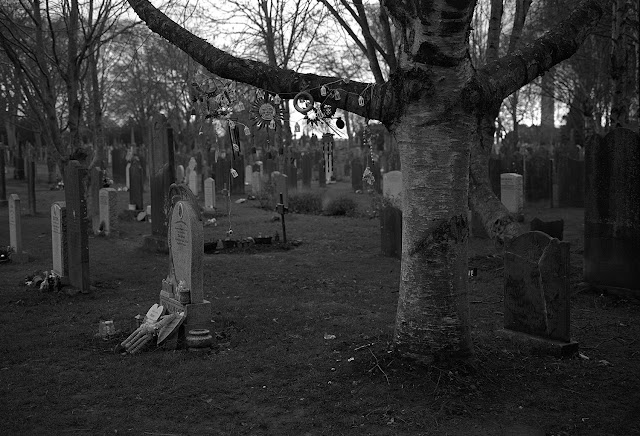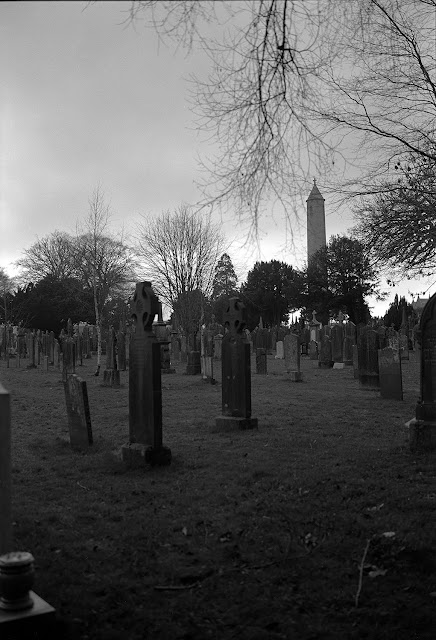As we all know by now 2020 has so far been a strange and difficult year for many, the Covid-19 virus has changed the way we live, the way we socialise, the way we seek and portray our art. In fact a lot of us will have suffered from a lack of enthusiasm as we try to keep ourselves busy with travel restrictions in place and no chance to really socialise or mingle.
During the full lockdown some months ago I created my own project of gathering local history from where I live, visiting old churches and schools, exploring the canal walk that runs close to my home, I photographed as much as I could within the
restricted limit of 2kms which later changed to 5kms.
Clonsilla School (1854). Rolleiflex T, Ilford HP5. ©Jim Leonard
Rediscovering your local history can be fascinating, searching local archives, seeking out interesting buildings and making connections that made your locality what it is, you get to walk in the footsteps of those who lived there before you.
St. Mary's Church (1840-1850) Rolleiflex T, Ilford HP5 ©Jim Leonard
As photographers we often choose a project based on the camera we use, the film we have selected for that project, or the subject, which is probably the most common. My own projects are generally associated with events, travel and/or culture.
As we enter into another phase of Covid-19 restrictions I thought about another lockdown project, and I guess this isn't really lockdown as we know it, many business's are thankfully still open so the economy, as much as it has suffered, is still turning over, again however, these restrictions prevent us from running and attending social events, it has certainly effected my skinhead project of which I had hoped to be in the final stages of compiling a book, perhaps I could work on something else to get a selection of those images out there, a zine perhaps?!
Now we're down to travel restrictions of just 5kms from our home in an attempt to bring the Covid positive numbers down, as photographers what do we do if we want to continue creating whilst staying within the restricted limits? I guess it very much depends on where you live, if you live in the centre of a city then you have an abundance of undiscovered streets and buildings to choose from, although footfall is down so street photographers may need to diversify. So what about those of us who live in the suburbs or countryside? do we just go out and photograph the same buildings and streets as we did during the last lockdown? Well I guess we do, but we too can diversify, yes we are about to take the same walks along the same streets or canal walks we've been doing through the Spring and Summer, photographing those interesting buildings steeped in local history, or a hill walk or walkway with interesting views.
Royal Canal Walk Clonsilla. Nikon D500 ©Jim Leonard
New Project
Most of my projects are shot on film, or a mix of film and digital, so I thought about how I was going to approach my new project which involved photographing the same locations I had photographed during the first lockdown without losing interest to both the photographer and the viewer. I browsed ideas, checking in with other photographers and what their thoughts were on new projects with the same subjects. After much thought and research I decided I'd shoot the same topics and locations but with one theme in common, I chose to shoot the same locations on a specific film, but which film?
Developing paper negatives in the darkroom ©Jim Leonard
After much thought, research and internet browsing I decided to choose a specific film to shoot the same buildings and walkways I had shot during the Summer. This time around with Autumn changing to Winter I decided to choose reversal film, or slide film as most would know it by, black & white was my choice this time.
Colour Reversal film was very popular a few years ago, it oozed colour and punched that image right to the viewer. Unfortunately the use of reversal film reduced over the years, in particularly since the introduction of digital photography and the number of labs who processed this E6 developing fell dramatically resulting in many labs closing with zero number of commercial labs processing reversal film in Ireland in 2020.
Fire Station Budapest. Leica M6, Fuji Velvia 100 ©Jim Leonard
Fomapan R100
After deciding I would select film as my main project point of these new restrictions I decided on reversal film, a complicated yet beautiful process which often gave incredible results, even though metering and processing temperature requirements were quite precise. I had previously been a fan of black and white reversal film and although this film had largely disappeared I knew that Foma still produced such film, they even produced a reversal developing kit to go with their branded film, credit to Foma for that.
A package from Czech Republic
After shopping around for the best prices on Fomapan R100 I chose to order straight from their factory in Czech Republic, a country I visit every year and pass close to their factory on my travels, something I only discovered this week, perhaps on my next trip I might get to visit the factory.
After browsing the website of Foma and setting up an account I placed my first order.
Fomapan R100 Black & White Reversal film
After a few days my order arrived from the Foma factory, everything was well packaged and the carton carried an advisory notice stating that film products were contained, I'm hoping this resulted in gentle handling by customs. I ordered a 30.5m roll of film which I will load into 35mm cassettes using my Kaiser bulk film loader.
Foma photographic paper which was a complimentary addition to the delivery
Fomapan R processing kit
So that's the new project almost set up, the locations will be familiar but the results will be different as I haven't shot on black and white reversal film for a few years now.
Stay tuned for the results.




















































